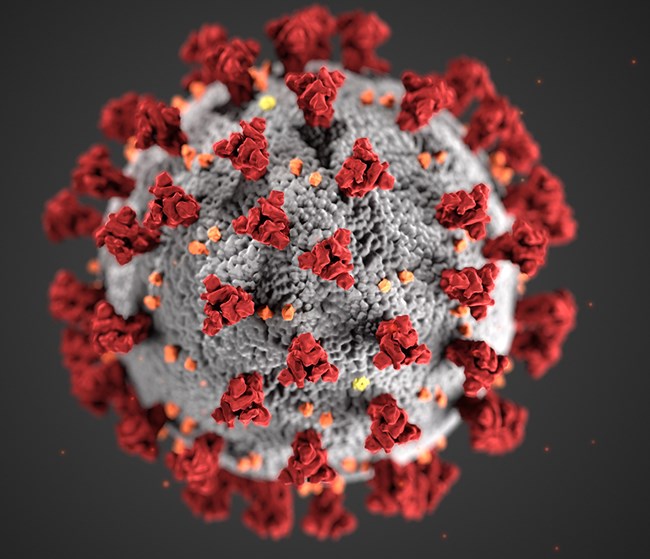
A Springer Nature journal has issued an editor’s note — which seems an awful lot like an Expression of Concern — for a widely circulated but quickly contested paper about how the novel coronavirus might infect white blood cells, akin to HIV.
However, readers could be forgiven for missing that fact. Indeed, the journal itself appears to be struggling to deal with the article — which one of the corresponding authors told us he asked to withdraw weeks ago.
The paper, “SARS-CoV-2 infects T lymphocytes through its spike protein-mediated membrane fusion,” appeared in early April in Cellular & Molecular Immunology. Most of the authors are based in China, and one, Shibo Jiang, is a prominent virologist with a joint affiliation at the New York Blood Center.
The work received significant attention from scholars and the news media. According to Altmetric, it has been the splashiest article to date for the journal, with coverage in New York Magazine, Wired and other mainstream outlets, and more than 6,600 tweets.
But not all of those tweets were favorable. One user, Leonardo Ferreira, of UC San Francisco, wrote:
Ferriera also posted an image of a letter he submitted to the journal expressing his concerns about the article. He tweeted that he received a response on April 18 thanking him for “indicating the crucial weaknesses” and saying that the authors decided to retract the paper.
That hasn’t happened yet. Meanwhile, Ferriera wrote, the paper has continued to garner attention and citations:
While I applaud the openness of the authors and the editor, what kind of system is this where it takes more than 20 times longer to amend the scientific record than to publish flawed articles?
Commenters on PubPeer also have raised questions about the research, pointing out potential issues with the images and, in one case, a litany of issues with the study itself.
These questions seem like the sorts of details peer reviewers and editors might have wondered about before acceptance and publication — had it not been so hasty.
‘Also confused’
Earlier this month, the journal appended to the paper the following note, which seems an awful lot like an Expression of Concern but is neither labeled nor indexed that way:
The Editors-in-Chief are currently investigating this article [1] as concerns have been raised about methodology used and the reliability of the conclusions. Further editorial action will be taken as appropriate once the investigation into the concerns is complete and all parties have been given an opportunity to respond in full. [1] Wang, Xinling, et al. “SARS-CoV-2 infects T lymphocytes through its spike protein-mediated membrane fusion.” Cellular and Molecular Immunology (2020): 1-3.
Jiang, who is one of the corresponding authors on the paper, told us:
As we mentioned in our comment, we had submitted a withdrawal application to the CMI Editorial Office several weeks ago, in order to revise the manuscript by adding the new results from experiments on the primary T lymphocytes and the repeated experiments on T cell lines, as well as the more detail information about the methods and discussion. …
some readers believe that our conclusion about SARS-CoV-2 infection in T cells is not valid enough because we have tested MT-2 cells, but not the primary T cells yet, although we have emphasized in our manuscript that SARS-CoV-2 could enter, but not replicate, in MT-2 cells. That is why we hope to revise our manuscript by adding the new results from experiments on the primary T cells that we have recently performed.
We wondered why the notice is silent on that score. Jiang said he and his colleagues:
are also confused. We called the editorial office today and were told that the NPG office is still processing our withdrawal application and will let us know once our application is approved.
We emailed the journal for comment but have yet to hear back.
Update, 0000 UTC, 6/17/20: Zhigang Tian, the editor of the journal, told Retraction Watch:
About two months ago, CMI office received comments from a researcher who raised some concerns about methodology used in this paper. According to the editorial policies, the comments were forward to the authors for their response. Authors recognized that using T cell lines in the experiments, rather primary T lymphocytes, may not be appropriate. So they requested to withdraw their manuscript and would repeat the experiment using human primary T lymphocytes. After a careful evaluation, we agree with the retraction request.
As a Springer Nature Group journals, the retraction request was submitted to Springer Nature Research Integrity Group (SNRIG) two months ago. SNRIG is a team at Springer Nature specialized in providing advices on issues related to scientific ethics. For every case, they need to investigate carefully and collect enough information to make sure that every step taken is in line with COPE guidelines. After completing all investigations, they would publish the retraction note and retract the paper.
Because of the virus situation with everyone working from home, the process has been prolonged. SNRIG suggests that we publish an editor’s note on this paper to make readers aware that there is an ongoing investigation and we will update them once the investigation has concluded.
Hat tip: Cheshire
Like Retraction Watch? You can make a tax-deductible contribution to support our work, follow us on Twitter, like us on Facebook, add us to your RSS reader, or subscribe to our daily digest. If you find a retraction that’s not in our database, you can let us know here. For comments or feedback, email us at [email protected].
Well, at least somebody bothered to read it, perhaps, you never know because you never know who the peer reviewers are (if there were any to begin with).